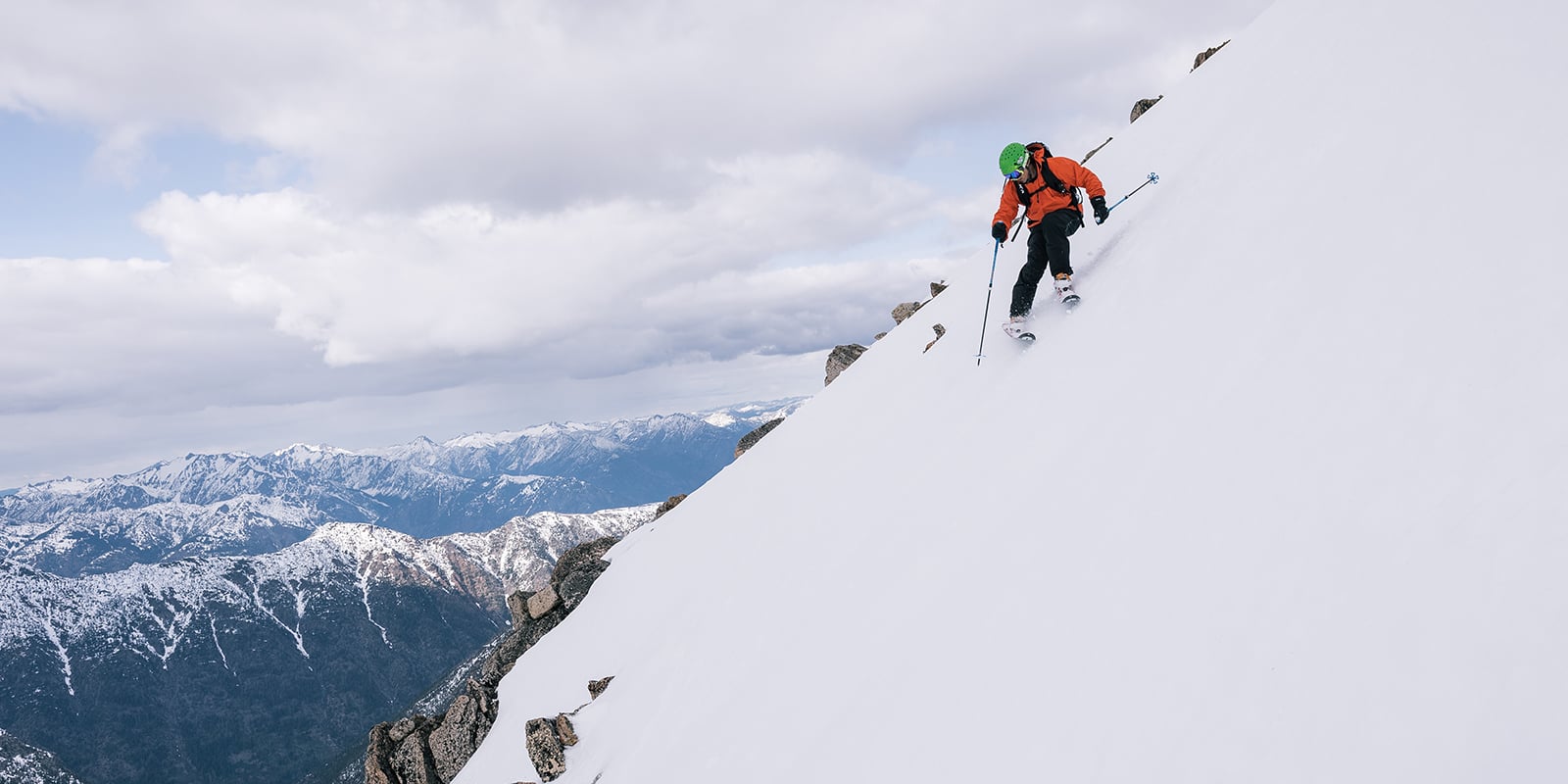Many skiers dream of leaving the groomed trails behind and making fresh tracks down powdery off-piste slopes. Three techniques that will help you navigate the steep slopes and deep snow typically found in off-piste terrain include:
- Blocking pole plants
- Hop turns
- Kick turns
In addition to these skills, it's essential to have the proper training and equipment to travel beyond the boundaries of a ski area. Learn more: Backcountry Travel in Winter.
Shop REI's selection of downhill skis and backcountry skis.
What is Off-Piste?
The term off-piste comes from French and is commonly used by skiers and snowboarders to describe terrain that's off the groomed trails. While exploring off-piste terrain, you can encounter a wide variety of snow conditions and terrain features, including deep snow, crud, bumps, steep slopes and narrow chutes.
You'll sometimes hear skiers and snowboarders use the term off-piste interchangeably with backcountry to describe terrain that's outside the boundaries of a resort.
Off-Piste Skiing Essentials
If you're venturing outside the boundaries of a ski resort and into the backcountry to access off-piste terrain, you need to consider the risks.
Avalanche safety: Avalanches are a real concern in some off-piste terrain and it's essential that you be properly trained. At a minimum, it's recommended that you take a level one avalanche course certified by The American Institute for Avalanche Research and Education (AIARE) before heading into the backcountry. Learn more about avalanche awareness and find an avalanche safety class.
Get the gear: The must-have gear for each and every backcountry explorer in your group is an avalanche transceiver, snow shovel and probe. Knowing how to use this gear is equally as important as having it, so practice before you go. Also consider an avalanche airbag backpack that can help keep you on the surface of the snow during an avalanche. For more details, see our article about Avalanche Safety Gear.
How to do Blocking Pole Plants
Pole plants while skiing downhill not only help with the timing of your turns, they are also useful for making tighter turns to get down off-piste slopes. A blocking pole plant in particular, is an effective technique for negotiating steep slopes.
Named for how it blocks the movement of your upper body, the blocking pole plant keeps your upper body from accelerating downhill so you can turn tightly to keep your speed in check on steep slopes.
Video: Skiing: Pole Plants
Blocking Pole Plant Technique:
- Plant to the inside: Pole plants are always made on the inside of a turn.
- Timing: It's important to time your pole plant with setting the edges of your skis.
- Angle and push: Place your downhill pole at a 45-degree angle to your skis then slowly push your hand down the hill and ski around the pole so you're ready to plant the other hand with the other edge set on the next turn.
How to Hop Turn
Some off-piste slopes, such as couloirs, chutes and gullies, are too narrow to get down with big arcing turns. This is when being able to hop turn comes in handy.
Video: Skiing: Hop Turns
Hop Turn Technique:
- Get low: As you set your edges and plant your pole to make a turn, flex your knees to absorb energy as you crouch down.
- Explode up: Use that energy to explode out of the crouch and pivot around the pole that you planted.
- Repeat: As you land, plant your other pole, flex your knees and prepare to explode up again.
How to Kick Turn
Kick turns are an effective way to change directions on skis without losing elevation. You can use kick turns any time you need to turn around, whether you're in front of the ski lodge or getting on a lift, but they're especially useful when negotiating steep off-piste terrain.
If you find yourself above a cliff or facing down a steep slope that you're not comfortable skiing, using a kick turn to change directions can help you find a different way out.
Video: Skiing: Kick Turns
Kick Turn Technique:
- Place the downhill pole: With your skis pointed sideways on the slope, turn your upper body so that it faces downhill while taking your downhill pole and placing it uphill and behind you. In this position, use both your poles and your uphill foot to stay balanced.
- Kick your downhill leg: Lift your downhill ski with a sweep forward and upward to bring it around in front of your body until your foot is facing in the other direction.
- Shift your weight: Transition your weight onto that downhill leg and find a balance point so that you can stand on it securely.
- Bring the uphill ski around: Once you've transitioned your weight onto the downhill leg, pick up your uphill ski and pole and bring them around to match your other ski and pole. As you twist around to face the other direction, the uphill ski becomes the downhill ski.
Remember: Safety is your responsibility. No internet article or video can replace proper instruction and experience—this article is intended solely as supplemental information. Be sure you're practiced in proper techniques and safety requirements before you engage in any outdoors activity.
